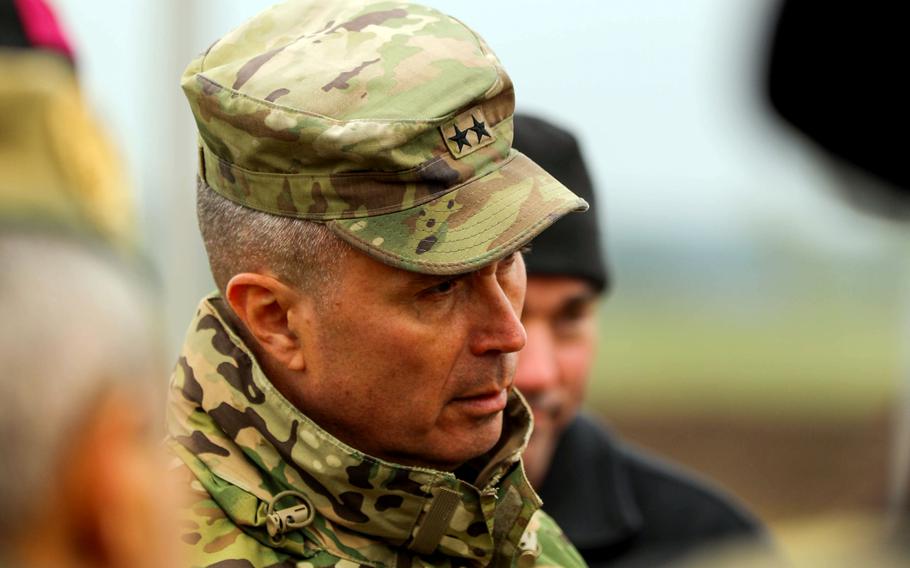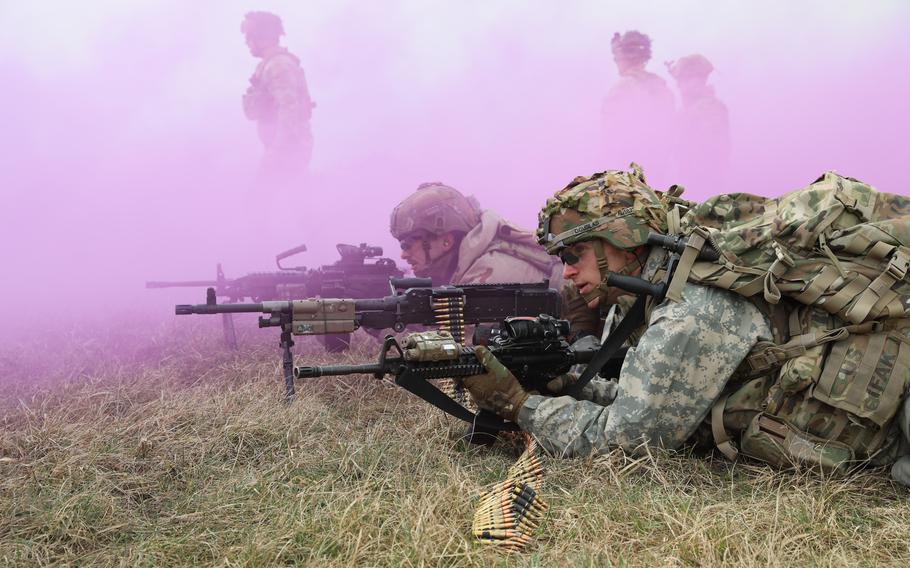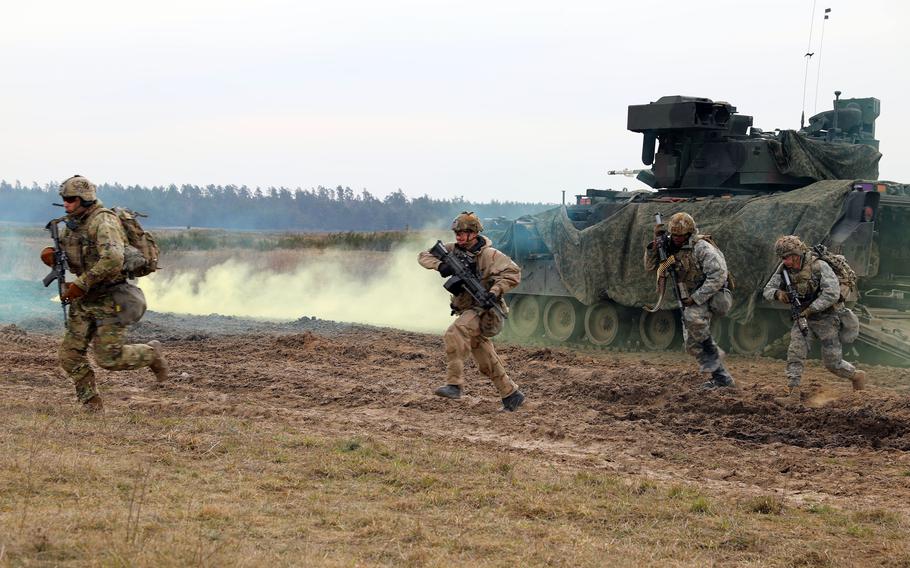
U.S. Army Maj. Gen. Christopher Norrie, commanding general of 3rd Infantry Division, listens to a presentation before a multinational live-fire exercise at Bemowo Piskie Training Area in Poland on April 17, 2024. (Sgt. Cecil Elliott II/U.S. Army)
Fake command posts, electromagnetic decoys and fast-moving mission control hubs are some of the ways the war in Ukraine has transformed U.S. Army training in Europe, according to a top American general in the wake of a rotation on NATO’s eastern flank.
The new focus is on getting troops to adapt faster to a more complex battlefield, the 3rd Infantry Division’s Maj. Gen. Christopher Norrie said in an Army statement Wednesday.
His team wrapped up a nine-month deployment this spring overseeing Army units across Poland and the Baltics.
The Army’s approach to training has evolved over the past couple of years with an emphasis on so-called “transforming in contact,” which involves drawing lessons learned by troops in the field that are rapidly tested by the larger Army.
“We’re observing the world, and then we’re transforming in contact,” Norrie said.

U.S. Army Cpl. Austin Douglas, front, and Pvt. Thomas Bryd, both with 2nd Armored Brigade, 3rd Infantry Division, maintain a defensive position during a NATO drill at Bemowo Piskie Training Area in Poland on March 11, 2024. (Anthony Ford/U.S. Army)
In the past, ensuring the mobility of a brigade command post wasn’t a major priority for the Army, which during two decades of conflict in Iraq and Afghanistan didn’t face adversaries with long-range strike capabilities.
However, the war in Ukraine and the widespread use of drones and precision strikes have revealed how exposed command posts can become.
During the 3rd Infantry Division’s deployment, which concluded in May, soldiers coordinated with the U.S. European Command’s Security Assistance Group – Ukraine team and learned about how Ukrainian forces carried out combat operations against Russian counterparts.
That information was delivered to other units preparing in the United States for their own deployments to Europe. The arrangement resulted in combat scenarios that incorporated technology such as tethered drones and electromagnetic decoys to assist in protecting U.S. forces from becoming targets, the Army said.

Soldiers assigned to 2nd Armored Brigade, 3rd Infantry Division run toward a defensive position during an exercise at Bemowo Piskie Training Area in Poland on March 11, 2024. (Anthony Ford/U.S. Army)
The deception tactics included creating fake command posts to lure in the simulated enemy. “This allowed them to destroy the adversaries’ assets while preserving the real command post,” the Army statement said.
Before his time in command of the 3rd Infantry Division, Norrie did multiple stints in Europe that included leading the 7th Army Training Command in Grafenwoehr. That has given him an up-close look at how the Army’s mission on the Continent has changed.
“In just a few short years, we have command posts that move in minutes,” Norrie said, adding that the Army also has gotten faster at issuing mission-style battlefield orders.
In 2017, he convoyed a full armored brigade of soldiers from a port in Germany to locations in Poland, marking the beginning of the Army’s effort to establish a continuous rotation of tank power in central and Eastern Europe.
Since then, Army operations along NATO’s eastern flank have steadily evolved.